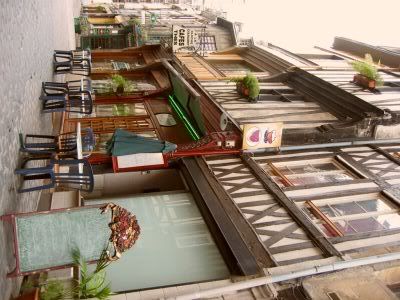
Rouen has a truly enormous heritage of early houses and accordingly, their upkeep is a massive task.

Yet Rouen is very much a living city rather than a museum and its houses, though charming, are still alive with the bustle of everyday life. And it had been medieval practice to construct buildings with one floor slightly projecting over the one below.

The Gros Horloge is an astronomical clock (16th century), located in the Gros Horloge street. An astronomical clock is a clock with special mechanisms and dials to display the relative positions of the sun, moon, zodiacal constellations, and sometimes major planets.This structure also includes a Gothic belfry and a Renaissance archway.

Located in the heart of the city, Rouen's Cathedrale is a living record of how Gothic architecture evolved over the years.

St Ouen's Abbey was once one of the most powerful Benedictine monasteries in Normandy. Situated next to the City Hall, the abbey church is often mistaken for the Cathedrale, owing to its majestic proportions : 137 metres long with vaults that reach 33 metres in height.

On the outside, especially the front façade, it is richly decorated in the Gothic style.

Formerly the Normandy Parliament building, Palais de Justice now houses Rouen's Law Courts. This is one of the most important examples of civil architecture from the late Middle Ages.

Joan sat in chains in this Joan of Arc Tower awaiting for her trial for witchcraft. She was a lonely, tormented teenager who had led her troops to victory and placed a new king on the throne of France. However, neither that King nor his shinning knights would come to rescue her. For days, she faced interrogation by the church and state officials. Her jailers treated her roughly and denied her time for her religious devotions. She stood by her conviction that she was guided by God to help the French and refused to sign any documents that might save her life. Finally, after withstanding long hours at a trial and abuse at the hands of her guards, she was sentenced to death May 30th, 1941. As Joan burned at the stake, legend has it that a hardened soldier who witnessed the scene cried out at her death, 'We have burnt a saint!'

3 comments:
wah lau eh...
the building here so opulent...the details lah the design...
must be verry tiring and difficult to maintain
hahahahah
yes. rouen is indeed a place rich in culture and medieval architecture. a must-go if one stops at paris. their maintenance and restoration are indeed a massive task.
Joan of Arc died May 30, 1431.
Post a Comment